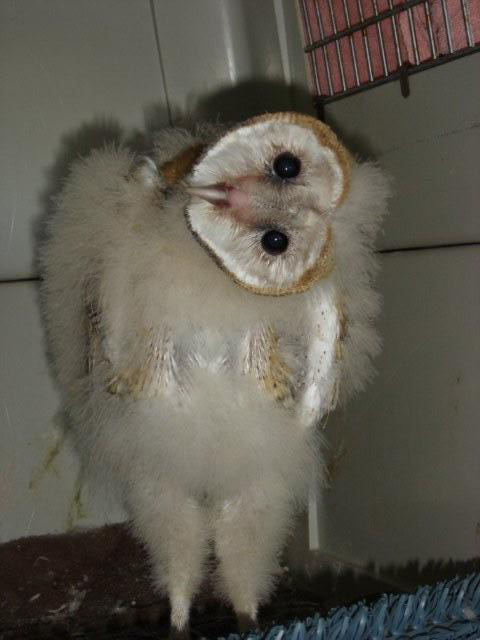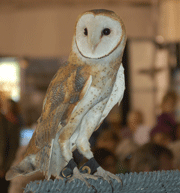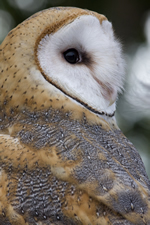
Barn Owl Nesting Boxes
Barn Owl populations in North America are decreasing due to loss of nesting and hunting habitat because of land development and an increased use of rodent poisons. In some states they are rare, Nebraska, North and South Dakota, and are endangered in Illinois, Iowa, Michigan, Ohio and Wisconsin. In Canada the owls are disappearing at an alarming rate.
What can you do?
Put Up a Barn Owl Nesting Box!
The best way to start is by
putting up a nesting box. Barn Owls are found anywhere there is suitable food and a good nesting habitat. But human development has reduced traditional nesting locations, such as barns, old buildings, church bell towers, cavities in trees, etc. Barn Owls are cavity nesters, easily attracted to a nesting box, so you can help by putting up a Barn Owl box in your neighborhood.
Barn Owls are the Natural "green" Rodent Controller,
A Mouse-O-Matic©, hunting up to 4 miles from their
nesting site. One Barn Owl can eat 700 pounds of rodents in their lifetime! Just think what a family of owls will eat!
Instead of you being overrun with rats and mice, a Barn Owl will take the rodent population down to a manageable level, eliminating the need for poisons and traps.
NBC Barn Owl Nesting Boxes are built by local Eagle Scout candidates and are available directly from Native Bird Connections for a $150.00 donation. If you're interested, email us at: snowyowl@nativebirds.org
Or you can build your own! Plans are available on the internet, but here's one we like: Build Your Own Barn Owl Nesting Box

Do Not Use Rotenticides (rat poison)

©Jodi Frediani
Learn more about Barn Owls:
- They nest from Jan - Oct... can have 2 clutches per year.
- In each clutch, there can be up to 7 young!
- Nesting owls are protected, do not disturb! This is both state and federal law.
- If the nest is in a tree and the tree needs trimming, you must wait until the fall when the nesting owls have finished raising their young. This is true for all trees -- if there is an active bird nest in the tree, no trimming can be done!
- Barn Owls will not hunt in the immediate area around their nest box. They do this to protect the nestlings from predators.
- Baby Birds who are healthy can be put back into their nest and the parents will continue to feed them... if you find a baby owl on the ground, call us at 925.963.9753 so we can get the owl back into the box safely (for both you and the owl!) or get the owl to a wildlife rehab center for medical help.
- It is against the law for anyone to keep injured wildlife, no matter how good your intentions are. Only licensed individuals may handle or keep them.
- Nesting boxes should be cleaned out every year -- between mid-October to the end of November. Make sure before opening the box that no other wildlife has moved in. Wear a mask and use gloves along with a prying tool to help in the removal of debris on the bottom on the box. Put the contents in a plastic bag and then into your garbage can. Do not use any cleaning solutions inside or outside of the box, just water, letting the box dry naturally.

Contact us at: snowyowl@nativebirds.org